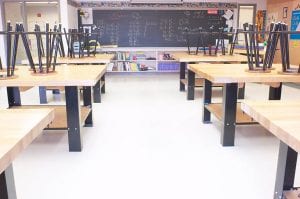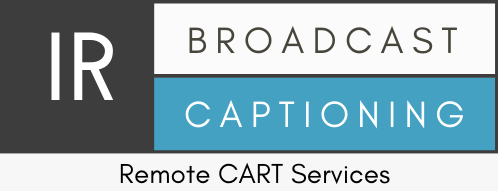 For educators that have students with hearing loss, either deaf or hard of hearing, having a greater understanding of the difficulties they face each day as a learner can make a large difference in how they absorb information.
For educators that have students with hearing loss, either deaf or hard of hearing, having a greater understanding of the difficulties they face each day as a learner can make a large difference in how they absorb information.
So, what are things you should know about so that you can provide inclusive services for these students? How will this affect the way your students are integrated into classes and are there any changes you need to make to your routine?
One of the biggest issues anyone faces when dealing with someone with hearing loss is that you never know who in the room is hard-of-hearing. One of the clearest pictures someone painted for me years ago was how they described being hard-of-hearing. That was, their disability – as they called it – was invisible. He then proceeded to say, A student in a wheelchair is easily identified, as is a blind student. But a student that is deaf or hard-of-hearing, their hearing loss is invisible. There are no immediate visual cues that will tell you, This person is deaf or hard-of-hearing.
Another common misbelief is that many people believe if the student with hearing loss has hearing aids, then they will have no issues in the classroom hearing anything. These magical devices will provide all the assistance they will need in the classroom. Just as if a student gets new glasses and can now read the information on the board, hearing aids will provide a perfect hearing for everything spoken in the classroom. This is one of the biggest misunderstandings. Hearing loss is more complicated and there are many things you need to be aware of to help these students succeed.
Hearing Aids – Do They Provide the Perfect Solution?
As we used the analogy above, that hearing aids are like new glasses and give the wearer improved hearing capabilities, they help but don’t provide the perfect solution as would new glasses. There are many other factors here that need to be taken into consideration with a person wearing hearing aids. While a hearing aid amplifies sounds, they don’t improve the clarity of those sounds.
Your student may still struggle to understand others while wearing hearing aids. Sometimes they can offer a dramatic improvement, but sounds can also be distorted, even though amplified, or the student may be more sensitive to certain sounds. Because hearing aids amplify all sounds and not just the ones you want to hear, a student may struggle to hear and understand the teacher if there is any background noise. This can lead to confusion and mental exhaustion for the student. Sound clarity can also be an issue for students who wear cochlear implants. Despite having hearing assistance, they can still be at a disadvantage compared to their hearing peers.
Listening is Mentally Draining
 A student with hearing loss works a lot harder while in a classroom. Keep this in consideration when dealing with their schedules. A full day of classes is a lot harder to deal with and, as the day progresses, a hard-of-hearing student will have more trouble comprehending information. Their brain is working double-time focusing on what you are saying. And the more profound their hearing loss is, the more these students struggle to listen, guess at words, assume things and this turns to missing context.
A student with hearing loss works a lot harder while in a classroom. Keep this in consideration when dealing with their schedules. A full day of classes is a lot harder to deal with and, as the day progresses, a hard-of-hearing student will have more trouble comprehending information. Their brain is working double-time focusing on what you are saying. And the more profound their hearing loss is, the more these students struggle to listen, guess at words, assume things and this turns to missing context.
To put it into another perspective, think about learning Italian for that trip you have always wanted to take to Italy. You start learning Italian, and after a few months, you’re fairly proficient in some general conversation. But when you land at the airport and the Customs agent speaks to you quickly, not directly to you, or quietly and using phrases you are not familiar with, your brain struggles to listen, process and comprehend what was just said. Then the taxi driver, your hotel clerk, the restaurant you visit. It is very draining on your mind. You start to get the idea, right?
This is why a student listening to everything in class has an extra task versus a student with no hearing impairments. Their brain is working in overdrive as they focus on context or fill in the blanks with the missing speech and their mind will then start guessing at those unheard words. This requires intense concentration on the part of the listener. This is where the mental exhaustion takes over as the day progresses, and at some point, their mind shuts down and now they are overloaded and don’t remember the information from this class, much less information from earlier in the day that was taught.
Environmental Issues in the Classroom for Hard-Of-Hearing Students
 Ambient noises in class environments can amplify the struggle a student deals with as they attempt to hear what is being taught. Noisy environments can quickly make a deaf or hard of hearing student feel overwhelmed. Think about room acoustics. A hard floor, walls and ceiling will add to issues. Things like noisy ventilation systems, vehicle traffic from open windows, other students talking in class, someone coughing, a video playing and the teacher talking at the same time, all these environmental issues combine to create mental exhaustion. The result, your student may mentally check out, stop paying attention and seem disinterested in what you are teaching in the class. Studies have shown that students with hearing loss experience greater fatigue than even children with chronic illness.
Ambient noises in class environments can amplify the struggle a student deals with as they attempt to hear what is being taught. Noisy environments can quickly make a deaf or hard of hearing student feel overwhelmed. Think about room acoustics. A hard floor, walls and ceiling will add to issues. Things like noisy ventilation systems, vehicle traffic from open windows, other students talking in class, someone coughing, a video playing and the teacher talking at the same time, all these environmental issues combine to create mental exhaustion. The result, your student may mentally check out, stop paying attention and seem disinterested in what you are teaching in the class. Studies have shown that students with hearing loss experience greater fatigue than even children with chronic illness.
This may lead you to think that a hard of hearing or deaf student is merely lazy or not capable. You may see their tendency to not pay attention as an indication of them being easily distracted or not interested but really, it is usually that their mental fatigue of the day leads to less motivation to pay attention or participate.
Another thing that may hard-of-hearing individuals tend to rely on is lipreading. Any student that is focusing on listening and lipreading will consume a great deal of mental effort and concentration on your lectures. And, as they focus on watching you speak to follow along, lipreading becomes ineffective if you are turning your back to them as you present information on a board or slide on a screen. Moving out of the student’s focus with your voice and mouth makes it even more difficult for them to follow along. It is estimated that about 40% of sounds can be seen on the lips of a speaker in perfect conditions. When you start to walk or turn your back, this number is reduced. Then there are also other This is where your movement in the classroom will reduce that. Also, some words can be difficult to read because we use the same facial expressions to say them. Example, “mop,” “bop,” and “pop.” In working with someone that is hard-of-hearing, you may have experienced people that will speak slow or loudly, believing that this helps someone in lipreading. If anything, over-exaggeration of words does the opposite.
Overcome Those Classroom Challenges
 Your first step to success with a hard-of-hearing student is being aware of the challenges they will face. Take time during your class to pick up on the things we’ve discussed, like background noises in the class. What about questions that a student asks. Do you summarize that question for not only the benefit of your hard-of-hearing student but all the other students? One question we also pose to an instructor is this; If a shy student in the front of the class quietly asks you a question and you provide an answer to the rest of the class, do ALL the students in the class even know what that question was? Not hearing a question, but only the answer, will confuse your hard-of-hearing student immensely.
Your first step to success with a hard-of-hearing student is being aware of the challenges they will face. Take time during your class to pick up on the things we’ve discussed, like background noises in the class. What about questions that a student asks. Do you summarize that question for not only the benefit of your hard-of-hearing student but all the other students? One question we also pose to an instructor is this; If a shy student in the front of the class quietly asks you a question and you provide an answer to the rest of the class, do ALL the students in the class even know what that question was? Not hearing a question, but only the answer, will confuse your hard-of-hearing student immensely.
Next, make sure your students are not talking amongst themselves with you are teaching. Those background noises, as subtle as they may seem, become extra things that your hard-of-hearing student may be hearing and focusing on.
Would other services provide solid solutions? Some options are note-taking or CART Services. Having such services provides enhanced learning also helps to reduce their mental fatigue. CART services especially, Using these provides the student with a file that they can use for key points and study purposes. CART services, in particular, provides a realtime translation of pretty much everything that by an instructor and allows the student to read what is said, providing greater comprehension.
In summary of the teaching environment, have you assessed the room and its acoustics? Do you repeat key points of information for your students? Is your student with a hearing loss in a good location so they can focus on your information and the course material being presented? Do you walk the room a lot when teaching, thus having your hard-of-hearing student losing focus on their listening and lipreading? Are there other visual aids, such as slides or handouts, that will help with the student’s focus?
And one of the biggest problems that not only hard-of-hearing students face, but all your students, is the speed at which you talk. Faster is NOT better, even if you think that you are trying to give as much information as possible. Did you know that the speed of a speaker in most audiobooks is between 150 to 160 wpm? The same is true for most radio hosts. Why? So that you best comprehend the content. They want you to grasp everything you say as they know that you cannot “see” what they are presenting.
Taking note of these points will help to enhance the environment for your students and work to reduce their mental exhaustion throughout the day. Having a solid understanding of the differences in how a hard-of-hearing student learns will not only help them but all your students.
Author – Duane O’Geil
Duane is the founder of IR Broadcast Captioning and has been involved in working with and providing services to schools and their hard-of-hearing and deaf students across North America since 1992.
